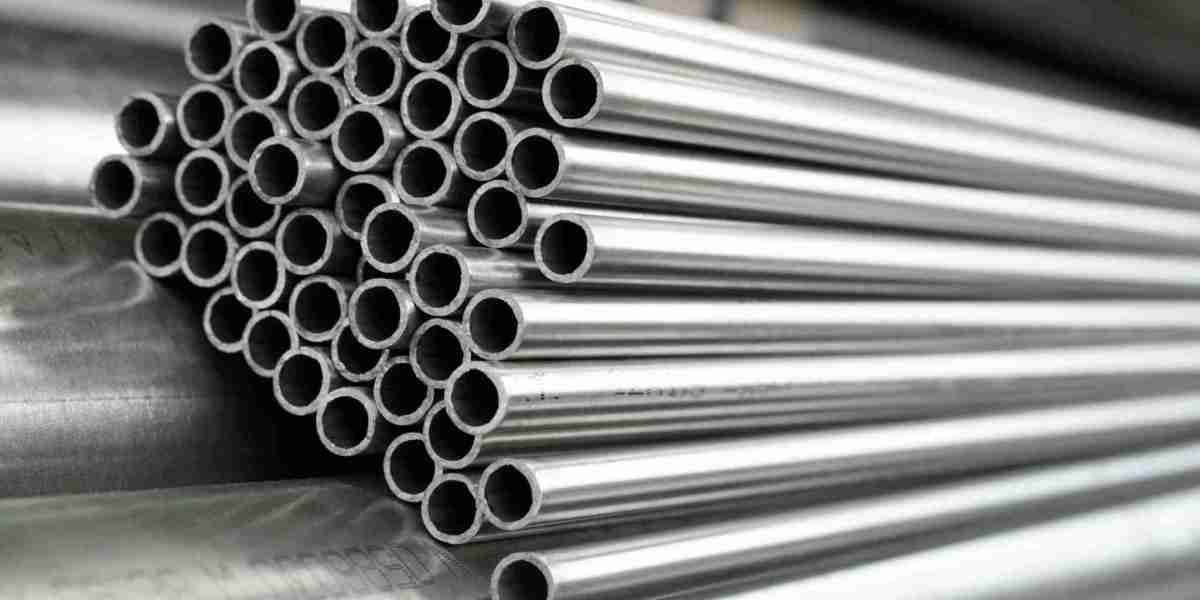The global trade of steel pipes and tubes plays a crucial role in maintaining supply chains for industries such as construction, energy, automotive, and water infrastructure. As nations develop and industries globalize, the export-import flows of steel piping products have become a key indicator of market health and industrial cooperation. This article explores the major export-import trends, trade policies, regional dynamics, and future outlook of the Steel Pipes and Tubes Market.
Global Steel Pipes and Tubes Trade Landscape
Steel pipes and tubes are traded extensively across the globe in two main product categories:
Seamless Pipes – Generally used in high-pressure and high-temperature environments (e.g., oil & gas).
Welded Pipes – Widely applied in construction, water pipelines, and structural applications.
Trade volumes fluctuate depending on raw material availability, geopolitical developments, infrastructure demand, and trade agreements.
Top Exporters in the Steel Pipes and Tubes Market
Several countries dominate steel pipe exports based on production capacity, technological advancements, and cost competitiveness.
1. China
World's largest steel producer and exporter.
Competitive pricing due to economies of scale.
Major exports to Southeast Asia, Africa, and Latin America.
2. Germany
High-end seamless and stainless-steel pipes.
Serves premium markets in Europe, the US, and the Middle East.
3. India
Rising star in welded and seamless pipe exports.
Strong presence in the Middle East, Africa, and the US markets.
4. South Korea
Known for advanced coating and specialty steel pipes.
Major trading partner for the US and ASEAN countries.
5. Italy and Japan
Focused on technologically advanced steel tubes for energy, automotive, and industrial sectors.
Top Importers of Steel Pipes and Tubes
Countries with high infrastructure growth, energy projects, and limited domestic steel production import significant volumes of pipes and tubes.
1. United States
Largest importer, relying on foreign steel for energy, infrastructure, and manufacturing.
Major sources: Canada, South Korea, Germany, and India.
2. UAE and Saudi Arabia
Extensive oil & gas and construction activity.
Import high volumes of seamless pipes from Asia and Europe.
3. Southeast Asia (Vietnam, Indonesia, Philippines)
Infrastructure and industrial growth drive demand for imported steel pipes.
China and Japan are leading suppliers.
4. African Nations
Limited local production capabilities.
Depend on imports for water, oil, and infrastructure projects.
Trade Agreements and Tariff Dynamics
The Steel Pipes and Tubes Market is heavily influenced by international trade policies, tariffs, and anti-dumping measures.
Key Trade Factors:
Anti-dumping duties: Imposed by countries like the US, EU, and India to protect domestic producers from low-cost imports.
Free Trade Agreements (FTAs): Influence tariff reductions and boost bilateral steel trade.
Section 232 tariffs (USA): A 25% duty imposed on steel imports since 2018 affected several exporters.
Examples:
The US has imposed anti-dumping duties on steel pipe imports from China, Turkey, and South Korea.
India imposed safeguard duties on certain stainless-steel tube imports to support domestic manufacturers.
ASEAN countries benefit from intra-regional FTAs that reduce barriers to steel trade.
Challenges in Steel Pipe Trade
While global trade opens up new markets, the steel pipe sector faces several challenges:
Geopolitical Tensions
Trade restrictions between major economies affect pricing and supply continuity.
Fluctuating Raw Material Prices
Variability in iron ore and coking coal prices can disrupt cost structures and pricing strategies.
Logistical Disruptions
Port congestion, container shortages, and high shipping rates affect timely delivery.
Environmental Regulations
Exporters must comply with strict carbon and environmental standards, especially in the EU.
Impact of COVID-19 on Trade Flows
The pandemic led to a temporary slowdown in international steel trade:
Manufacturing shutdowns disrupted both supply and demand.
Construction and energy projects were delayed, affecting order volumes.
Recovery in 2021–2023 saw pent-up demand boost imports, especially in North America and Asia-Pacific.
Technological Integration in Global Trade
Digital platforms and supply chain tools are being increasingly used to manage and optimize steel trade logistics.
Blockchain: Helps verify material origins and ensure traceability.
AI-driven Trade Analytics: Predict demand, optimize routes, and manage inventory.
E-commerce Portals: Facilitate B2B transactions across borders more efficiently.
Opportunities for Exporters and Importers
For Exporters:
Invest in high-quality, specialty-grade pipes for value-driven markets.
Tap into emerging markets in Africa and Southeast Asia.
Comply with ESG and carbon-neutral production standards to access European and American markets.
For Importers:
Diversify sourcing to reduce dependency on any single country.
Focus on long-term partnerships with reliable suppliers.
Explore local assembly or fabrication partnerships to reduce costs.
Outlook for 2025–2032
The global Steel Pipes and Tubes Market is poised for steady trade growth supported by:
Expansion of oil & gas and renewable energy projects.
Smart cities and infrastructure development.
Rebuilding of global supply chains post-COVID.
Increased focus on sustainability and efficient trade logistics.
Asia-Pacific will continue to dominate exports, while North America and the Middle East remain leading importers. Digital transformation and trade liberalization will further shape global trade in steel pipes and tubes.
Conclusion
Export-import trends and international trade dynamics are fundamental to the health of the global Steel Pipes and Tubes Market. As construction, energy, and industrial needs evolve worldwide, strategic trade policies, regional collaborations, and technological innovations will determine how steel pipe producers and buyers thrive in a complex global environment.



